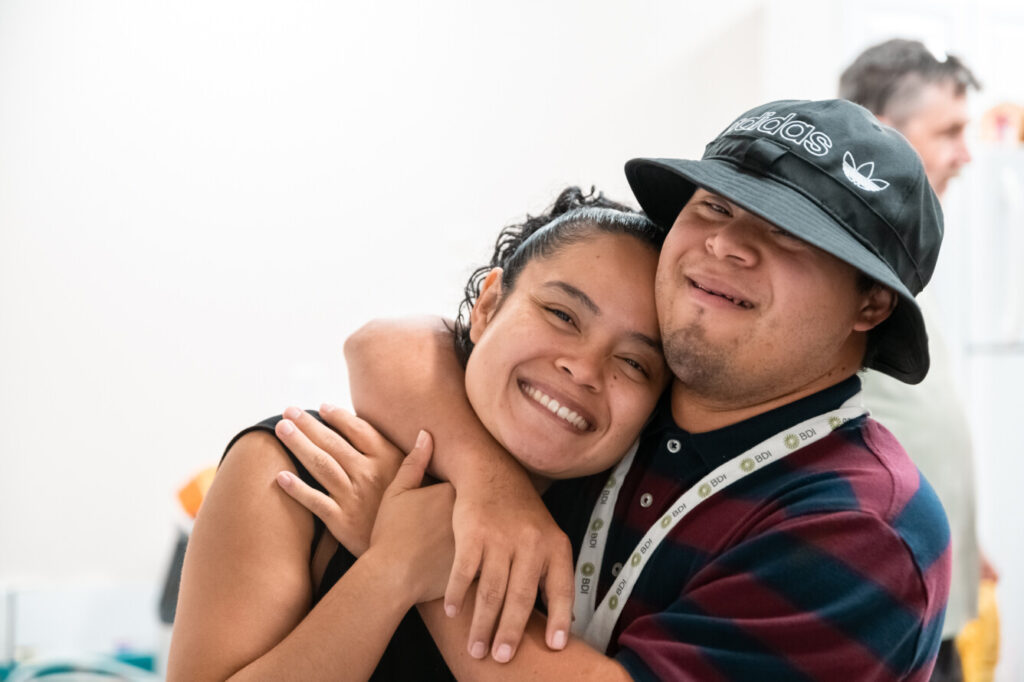Managing jobs, family, and personal affairs and constantly competing with the clock—we all know the crazy pace of life can be overwhelming and make us feel like we can’t keep up. Adding the role of caregiver to the day-to-day brings its own unique challenges and special circumstances.
Right now, 43 million Americans—nearly one in five—serve as unpaid family caregivers. Seventy percent of these caregivers report experiencing at least one adverse mental health symptom, such as anxiety, depression, or even suicidal thoughts. Physical strain is also common, which contributes to burnout. Caregivers often spend over 20 hours a week on caregiving tasks; for some, it’s far more than that.
58% of caregivers are women. “This often comes as no surprise; among parents we support, one family member typically leaves their career to stay home, and it’s usually the mother who steps into this role,” says Kate Houck, Chief Energy Officer and Executive Director at David’s Refuge.
David’s Refuge is a New York State-based organization that supports caregivers. Its mission is to provide respite, resources, and support to parents and guardians of children with special needs or life-threatening medical conditions so that they can be refreshed, restored, and renewed in their roles as caregivers.
“The work we do through David’s Refuge aims to remind people who aren’t caregivers to show up for those who are, offering support to friends, family, or colleagues who need it. We encourage agencies, healthcare, and educational professionals to recognize that even one person can make a difference in a caregiver’s journey,” added Kate.
What is Caregiver Burnout?
Caregiver burnout is a real and serious issue. This term refers to a state of physical, emotional, and mental exhaustion that can be incredibly damaging, not only to the caregiver but to the entire family. If caregivers struggle, unable to get out of bed or suffering from physical breakdown, the whole family can be affected. Burnout can happen when caregivers don’t get the help they need or try to do more than they’re capable of—physically, mentally, or financially.
When left unchecked, this stress can harm caregivers’ health, relationships, and state of mind.
The Signs of Caregiver Burnout
Recognizing the signs of caregiver burnout is key. Some indicators include anxiety, depression, irritability, impatience, constant exhaustion, neglecting responsibilities and personal needs, frequent illness, loss of interest in once-enjoyed activities, withdrawal from friends and family, and feelings of helplessness or hopelessness. Social isolation is also common, as caregivers may find it difficult to attend social events where others don’t understand their journey. Constant worry, even when help is present, or, in severe cases, thoughts of self-harm or harm to the person being cared for, are serious signs of burnout. Identifying these symptoms is the first step toward seeking resources that can help.
Kate’s reminder: “Many caregivers live in a constant state of “survival mode,” with some in a healthier place between survival and thriving, while others may reach a crisis point. We should always remember that the best way to care for others is by caring for ourselves. The greatest gift you can give your family is your health and personal growth.”
Ideas to Support Self-Care
As caregivers, it’s essential to identify where you are on your journey. “Some caregivers hesitate to label themselves as such. But embracing that identity, with all its challenges, is a step toward accepting support and resources,” Kate says. Self-care is a vital element no matter where you are on that journey. Small actions like this make a big difference.
Here’s How to Begin.
Take the “10-Minute Challenge.” Dedicate 10 minutes each day to each of these areas:
- Stillness
- Movement
- Nature
- Community
Practicing Stillness
Even for just 5 minutes a day, practicing stillness can help you reset and ground yourself. Take a few minutes to set positive intentions, clear your mind, and disconnect from the constant noise of technology. Try to disconnect from your phone, computer, or other devices daily, even if just for a few minutes.
Move Intentionally
Movement is also essential. Even a few minutes of physical activity daily can do wonders. Walking around while on the phone or stepping outside for fresh air can boost your mood and help you feel better. The goal is to make intentional movement a part of your daily routine. Instead of taking the elevator, use the stairs. Attach a “why” to it—make it meaningful. For example, “I’m committed to health not just for fitness but because I want to avoid a health crisis like the one my father faced at my age.” This connection to a deeper purpose helps you view health as a journey, not a start-to-end goal.
Practicing movement in ways that feel good brings both rewards and health benefits. If you can join a fitness group or class, it encourages you to show up and share the space with others, moving together. “Until these practices become habitual, it’s important to set daily intentions. If your goal is to improve your health, consider how daily movement could strengthen your muscles and improve your wellbeing. Setting an intention could be as simple as thinking, “I want to be healthy and strong for my family” or “I want to be strong for myself”. Reflecting on this during a moment of stillness can help you integrate these health practices naturally,” pointed Kate.
Nature is Your Best Friend
Nature offers us the chance to connect with something greater than ourselves. The beauty of a sunset or the changing leaves can reduce anxiety and lower blood pressure. The fresh air and sunshine also contribute to our overall wellness. Think about how you could incorporate at least ten minutes outside each day. Could you take calls or meetings outside or have a walking meeting with a colleague? Look for ways to spend that time in nature daily. Moments in nature, like witnessing a sunset or stargazing, can bring a sense of awe, reminding us of the vast universe around us. It often puts our daily stresses into perspective. If you’re having trouble finding time, try building it into what you’re already doing, like taking a quick walk around the block.
Rely on Your Community
Why is it so important for us as human beings to stay connected to others? By connecting with others who understand your journey, you’re connecting to something bigger. Throughout history, being part of a community has been essential for survival, providing access to food, shelter, and safety. But in today’s world, we often feel we can manage everything alone, which can make us more isolated. Community gives us emotional support, shared wisdom, resources, and opportunities for growth, and helps us reduce stress.
People find community in various ways: church groups, work, support groups, or sports like pickleball.
Another key step is reaching out to other caregivers. Research shows that 40 percent of caregivers report feeling less depressed when they receive strong support from even just one other person. “Don’t wait—if you see or know someone struggling or showing signs of burnout, reach out. Don’t pull away, push in. Look for ways to help, educate yourself about their situation, ask thoughtful, curious, and nonjudgmental questions, or simply be a listening ear. Inform caregivers you know about available local services. Offer empathy and understanding. Many of us have seen a caregiving parent in public struggling with their child, and people just stare in judgment. Let’s be the ones who never do that. We can educate our communities on supporting caregivers and accepting everyone as they are,” Kate emphasized.
How are you ensuring you get enough true rest? Are you making intentional time with your spouse? Over 80 percent of couples with a child with special needs end up divorcing, which is an alarming statistic. So, how are you connecting with your community? How are you making sure you engage and participate?
“I encourage you to consider your respite, community, and wellness practices. You can start implementing these on your own, leading to a more empowered life. Think of one small change that could positively impact your life. As humans, we don’t need huge changes all at once; sometimes, small, intentional actions move us forward,” says Kate.
Caregiving isn’t just an “if”; for many, it’s a “when.” It’s important to think about how we can be prepared for that role when the time comes. “And if you know a caregiver, take a moment to send them a message to acknowledge their hard work. That small gesture can make a big difference,” Kate added.



